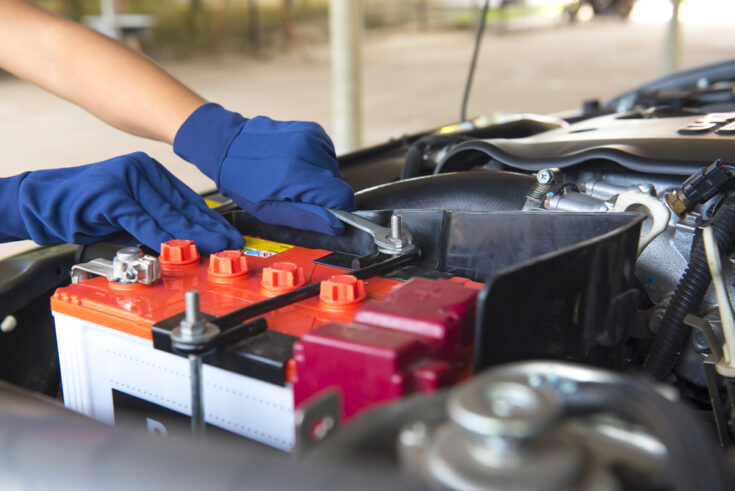The Types of Batteries is one of the most crucial elements of a vehicle. If it is not there, then the car cannot drive. However, this doesn’t mean we should ignore other car particles. Each plays a vital role, and each one cannot function without the rest. It is not a stretch to claim it is connected to the other components that allow a car to run.
However, to say that the goal of this article isn’t to talk about interconnections. We will instead concentrate on the different types of batteries for cars. The reason why we’re insisting on this is due to the demand for them. The last time we spoke, we discussed the top causes of failures of car batteries. Then, we got inquiries about the most effective car battery and the different types of car batteries or car battery repair in Mumbai.
Battery Power Source
The two kinds of auto batteries, including flood and AGM batteries, rely on lead-acid technology. A typical lead-acid car battery consists of plates of lead, alternated with plates composed of different materials, submerged in an electrolyte mixture consisting of around one-third sulfuric acid with two-thirds water.
The ignition is activated when you turn it on. This causes the acid present in the liquid electrolyte solution which reacts with an active substance on the electrodes (active material is any substance within your battery that reacts to recharge or discharge batteries). This causes a more significant electrical current—the current moves through the engine’s starting system through events that signal the engine to kick off.
Capacity of Batteries
Throughout some time, it received updates and improvements. It also changed its appearance of it and its capacity. However, the primary role of the battery was the same. The battery has to be significantly more significant incapacity. This is because the amount of equipment that operates on electricity is also increasing.
The capacity of a battery depends on the number of chemicals it has, and it also restricts the amount of current it can provide. Nickel-alkaline, lead-acid, and Zinc-air are among the most well-known Types of Batteries.
What happens when the Car Battery Charges
The alternator is responsible for charging the battery of your car as you drive. It also provides electricity to the car’s electronics while you’re going. It’s driven through the belt that drives alternators coming from the engine. As the belt moves around, it creates an electrical current to power your car’s electronics. The belt also delivers some energy into the battery to recharge it.
A voltage regulator regulates this flow of electricity to ensure it stays in line and provides the correct amount of power to fulfil the AC or heating requirements. It also safeguards the battery from charging too much, which can cause damage to it.
Different kinds of electric car batteries
1. SLI Batteries
The most common type of battery that is used in the majority of automobiles is called the SLI. SLI means lighting, starting and ignition. It’s a wet battery, is quick to charge and provides 12.6 Volts to the starter, which assists in the start-up process. It also powers your interior lights, headlights, and entertainment systems.
The disadvantage of this type of battery is that it will lose its charge fast, which is why it’s not a good choice in situations that don’t have an automatic charger, such as the alternator in your car. The frequent use of it out of battery can harm it and reduce the battery’s life span.
2. Deep-Cycle Batteries
If you are the owner of a recreation vehicle (RV), golf vehicle, or electric vehicle (EV), then there’s a good chance you’ve been informed about deep cycle batteries. These batteries are popular due to their capacity to hold a lot of energy, and this means that you can utilize them for a more extended period. They are also suitable for storing solar power, which is why they’re pretty expensive.
3. Lead-acid Batteries
Lead-acid batteries are currently being utilized in electric vehicles to supplement other battery packs. These batteries are highly powered cheap, safe, and reliable; however, their limited calendar lifespan and low cold-temperature performance make them challenging to utilize within electric cars. There are lead-acid batteries that are high-power being developed; however, the batteries are currently only used in commercial vehicles for backup storage.
4. Nickel-metal Hydride Batteries
Nickel-metal Hydride batteries are extensively used in hybrid electric vehicles, but they can also be utilized successfully in other electric cars. Hybrid electric cars don’t draw the power they require from a plug-in source external to the vehicle and instead depend on fuel to charge the battery. This excludes them from being electric vehicles.
Nickel-metal Hydride batteries have longer lives than lead-acid batteries or lithium-ion, and they are also secure and can withstand abuse. The main issue with nickel-metal-hydride batteries is their cost-intensive, the high rate of self-discharge, and the fact they produce substantial heat when temperatures are high. These factors make them less suitable in rechargeable electric vehicles, so they are used primarily for hybrid cars.







Leave a Comment